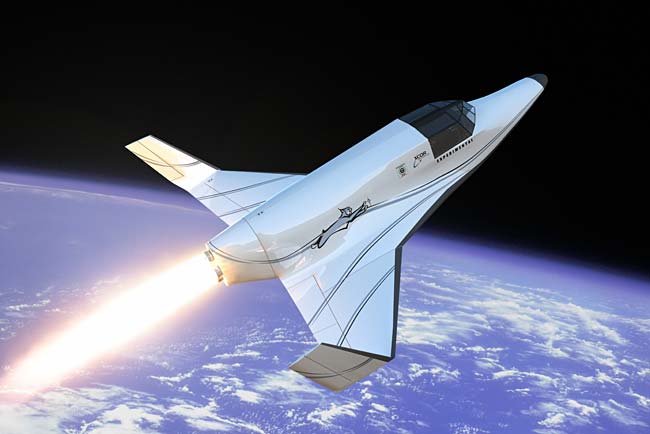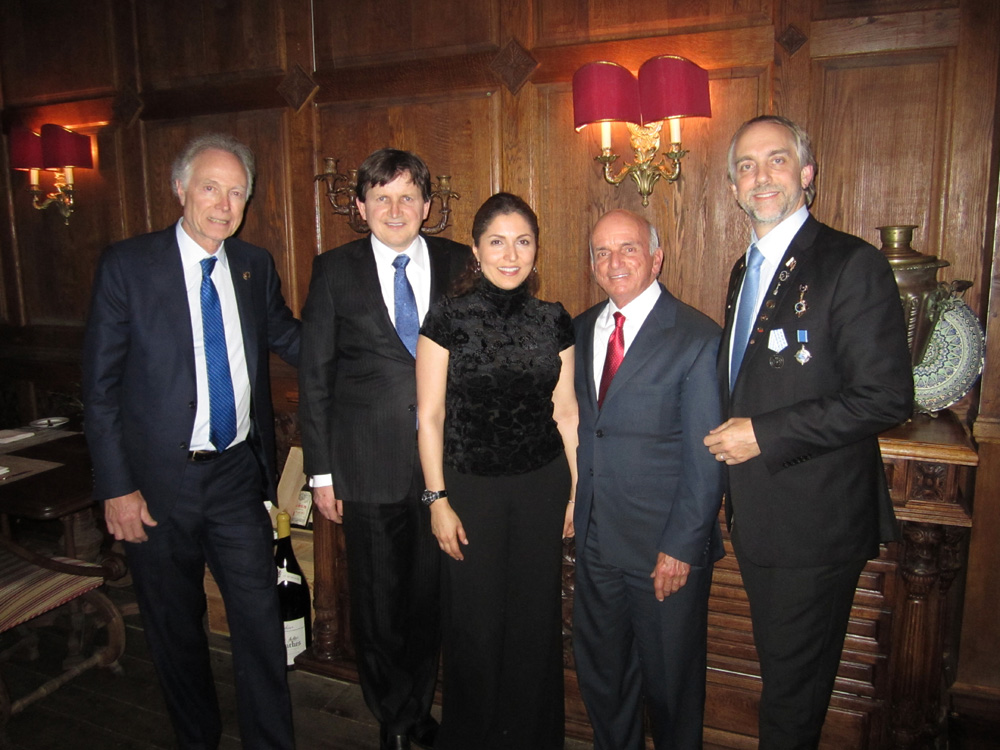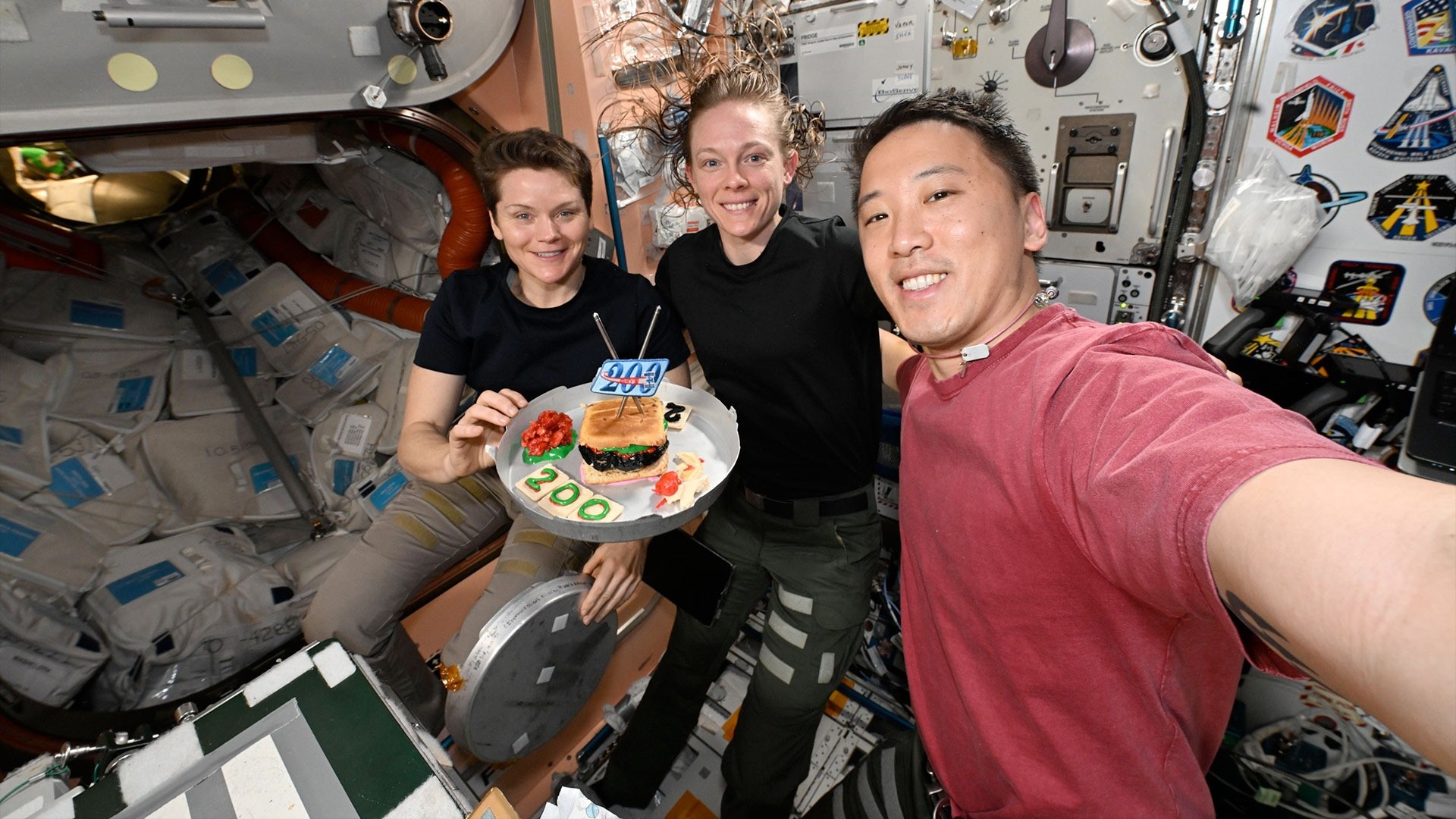Future of Space Tourism: Who's Offering What

Fifty years after Russian cosmonaut Yuri Gagarin became the first human to experience the wonders of spaceflight, commercial companies appear to be on the cusp of a breakthrough industry -- space tourism.
In a bid to open up the final frontier to an expanding group of people, private firms are racing to provide paying customers with unique orbital and suborbital experiences.
Suborbital spaceships would take passengers up to space at an altitude of about 62 miles (100 kilometers) -- commonly known as the edge of space -- before returning to Earth. These passengers would get a glimpse of the edge of our planet and the blackness of space while experiencing several minutes of weightlessness.
On orbital flights, only those who can afford the multimillion dollar ride will have the chance to rocket into low-Earth orbit and visit the International Space Station. But, as the space tourism industry expands and more vehicles are able to take customers into space, these trips could go down in price. [Vote Now! The Best Spaceships of All Time]
In the meantime, space tourism seems poised to launch, and there are a wide range of options available for those who want to experience the thrill of spaceflight. This list is not exhaustive, but provides an outline of various space tourism options available today, as well as some to look forward to in the near future:
Suborbital
Zero G Corporation
Breaking space news, the latest updates on rocket launches, skywatching events and more!
Vehicle: G-Force One, a modified Boeing 727-200 aircraft
Price: $4,950 per passenger
This Vienna, Va.-based company, owned by the space tourism company Space Adventures, offers passengers the chance to experience various states of microgravity aboard a modified Boeing aircraft. The G-Force One plane flies a series of 12 to 15 parabolic arcs at various altitudes and angles that mimic different states of microgravity. Each parabolic maneuver allows passengers to experience about 35 seconds of the gravitational state on Mars or the moon. [Vacations in Zero Gravity Come of Age]
Since the company's first flight in 2004, Zero G Corp. has flown over 6,000 people, including former Apollo astronaut Buzz Aldrin, and celebrities such as Martha Stewart, rocker Ozzy Osbourne and famed astrophysicist Stephen Hawking.
Still in the works
Virgin Galactic
Vehicle: SpaceShipTwo
Price: $200,000 per passenger
Founded by British billionaire Sir Richard Branson, Virgin Galactic has been making waves in the suborbital spaceflight industry. Virgin Galactic's SpaceShipTwo space plane is designed to be carried into midair by the company's massive WhiteKnightTwo mothership. At an altitude of about 50,000 feet (15,200 meters), the carrier plane releases SpaceShipTwo, which fires its rocket engine and climbs toward the edge of the atmosphere. Passengers will experience roughly five minutes of weightlessness before gliding back for landing.
Flights, which will carry six passengers and two pilots, are scheduled to depart from New Mexico's Spaceport America. Virgin Galactic recently completed its longest test flight of the SpaceShipTwo vehicle, and company officials have said that regular space tourist flights should begin in 2012. Despite the hefty ticket price, nearly 400 people have already put down deposits for future flights. [Infographic: Spaceships of the World]
Others in the wings
Other companies looking to break into the suborbital spaceflight market include XCOR Aerospace, Blue Origin and Armadillo Aerospace. The highly secretive Blue Origin, which is founded by Amazon.com CEO Jeff Bezos, is developing a fully reusable suborbital vehicle called New Shepard, which is capable of flying three or more passengers on suborbital flights.
Armadillo Aerospace, a Texas-based company founded by computer game entrepreneur John Carmack, is working on a vertically launched rocket ship to carry passengers to the edge of space. Armadillo Aerospace's deal with Space Adventures will offer these suborbital flights for $102,000 per passenger -- almost half the going rate for a seat on one of Virgin Galactic's joyrides.
XCOR Aerospace, based in Mojave, Calif., is building a two-person suborbital space plane called Lynx, which is designed to take off and land on an airport runway. The vehicle is still in development, but XCOR and its rival Virgin Galactic have both already inked deals to carry scientists from the Southwest Research Institute, a nonprofit research organization based in Boulder, Colo., on future scientific suborbital flights. [Video: Fly to Space with Rocketship Tours]
Space tourists, including scientists and researchers, are required to undergo some sort of training prior to their suborbital flights, and one company, the National Aerospace Training and Research Center (NASTAR) in Southampton, Pa., is hoping to capitalize on what could one day be a booming market.
The $3,000 NASTAR training program is designed to familiarize passengers with the rigors of spaceflight. The training runs, which include rides in a centrifuge that can pack on forces up to six times the normal force of gravity, can simulate the flight profiles of various vehicles, making the courses adaptable to the specifications of different companies.
Orbital
Space Adventures
The Virginia-based Space Adventures is a space tourism company that arranges multimillion-dollar trips to the International Space Station for extremely wealthy clients. The firm is the only company that has booked private flights to the space station, and brokered those deals with the Russian Federal Space Agency, to charge customers about $35 million for rides on Russian-built Soyuz spacecraft.
Dennis Tito, a California-based multimillionaire, became the first-ever space tourist when he launched to the station in a Soyuz capsule in 2001. A string of wealthy individuals followed, including American billionaire Charles Simonyi and Ansari X Prize backer Anousheh Ansari – the first female space tourist. In total, Space Adventures has arranged eight private space tourist flights to the International Space Station for seven people (one customer flew twice) since 2001.
The most recent flight occurred in October 2009, which sent Canadian billionaire Guy Laliberte, founder of the circus troupe Cirque du Soleil, on an 11-day space excursion. Space Adventures recently announced that it will resume these high-profile spaceflights in 2013.
A new agreement with Russia's Federal Space Agency (Roscosmos) and the country's spacecraft manufacturer, RSC Energia, earmarks three Soyuz seats per year for Space Adventures beginning in 2013. Tickets for these flights are already available for purchase.
Still in the works
Several companies are hard at work designing, building and testing vehicles that aim to fill the American gap in human spaceflight following the retirement of NASA's space shuttle program. These commercial providers hope to carry astronauts to the International Space Station, but could also one day transport other paying customers to the space station and future destinations in low-Earth orbit.
Boeing, SpaceX, Blue Origin and Sierra Nevada are developing and testing vehicles and launch systems as part of NASA's Commercial Crew Development (CCDev) program.
Boeing's Commercial Space Transportation-100 (CST-100) space capsule is being designed to carry astronauts and supplies to the space station, but the aerospace giant has also partnered with Space Adventures to sell passenger seats for future CST-100 flights. These trips would bring customers to the International Space Station, and perhaps one day to Bigelow Aerospace's planned inflatable space station.
At least two other efforts to build commercial space stations for private orbital spaceflights: The Isle of Man-based Excalibur Almaz is currently working to build new stations based on proven Soviet-era designs while the Russian team of companies RSC Energia and Orbital Technologies hopes to launch what it bills as the "world's first commercial space station" by 2016.
SpaceX's Dragon capsule will soon be used to ferry cargo and supplies to the International Space Station, but the Hawthorne, Calif.-based company is also working on a version of the Dragon that can carry humans into orbit.
Sierra Nevada, based in Sparks, Nev., is developing a seven-person Dream Chaser vehicle for private spaceflight. The spacecraft is being designed to launch vertically on a rocket and land horizontally on conventional runways.
Orbital Sciences of Dulles, Va., already has a contract with NASA for its Cygnus freighter to carry supplies to the International Space Station. The veteran aerospace company also proposed a crew-carrying vehicle -- a winged space plane called Prometheus -- that could carry four to six astronauts into low-Earth orbit. The proposal was not chosen for funding under the second round of NASA's CCDev program, so the spacecraft remains a concept at the moment.
Other contenders for orbital space tourism include Chicago-based PlanetSpace, Inc., which is designing a space plane called the Silver Dart; Blue Origin and its planned orbital space vehicle; and Excalibur Almaz Limited, based in the Isle of Man, which is retrofitting old Soviet spaceships for future commercial flights.
You can follow SPACE.com Staff Writer Denise Chow on Twitter @denisechow. Follow SPACE.com for the latest in space science and exploration news on Twitter @Spacedotcom and on Facebook.
Join our Space Forums to keep talking space on the latest missions, night sky and more! And if you have a news tip, correction or comment, let us know at: community@space.com.

Denise Chow is a former Space.com staff writer who then worked as assistant managing editor at Live Science before moving to NBC News as a science reporter, where she focuses on general science and climate change. She spent two years with Space.com, writing about rocket launches and covering NASA's final three space shuttle missions, before joining the Live Science team in 2013. A Canadian transplant, Denise has a bachelor's degree from the University of Toronto, and a master's degree in journalism from New York University. At NBC News, Denise covers general science and climate change.





